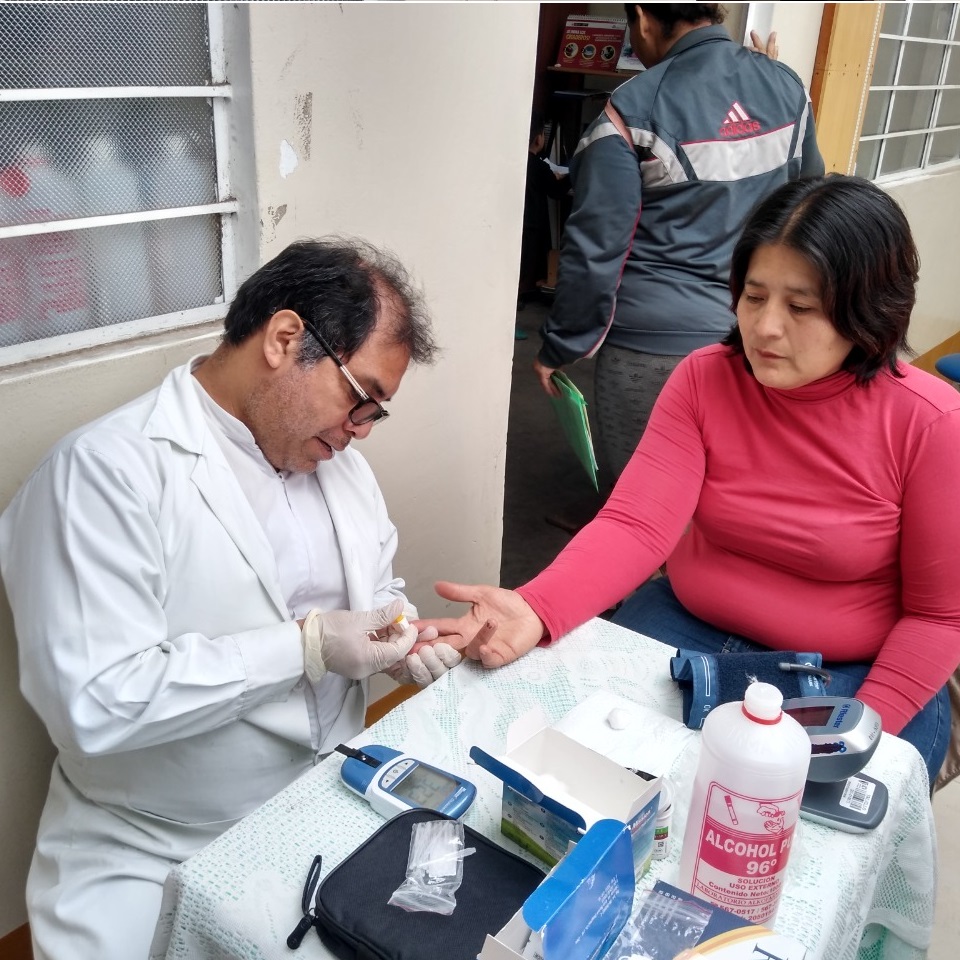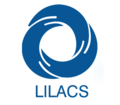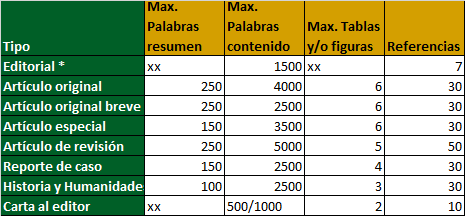Relationship between atherogenic indices and abdominal obesity in residents of Trujillo district, Peru
DOI:
https://doi.org/10.37711/rpcs.2021.3.2.311Keywords:
abdominal obesity, cholesterol, triglycerides, HDL lipoproteins, cardiovascular diseasesAbstract
Objective. To determine the relationship between atherogenic indices and the presence of abdominal obesity in residents of the district of Trujillo, Peru. Atherogenic indices related to obesity can provide additional information to the risk established by obesity. Methods. The study was a non-experimental, descriptive correlational and cross-sectional design. The sample consisted of 319 adults between the ages of 25 and 65 years who attended four health centers in the city between July and December 2019. To evaluate the atherogenic indices, the lipid fractions of cholesterol, triglycerides, HDL-C and LDL-C were measured using the Mission Cholesterometer®. Regarding the presence of abdominal obesity, the waist circumference indicators established by the Latin American Diabetes Association were used. Results.The statistical analysis used to relate both variables was the chi square test in the SPSS version 25 program. Abdominal obesity was found in 61.1% of the population. As for the atherogenic indexes, these reached a diagnosis of risk in 75.5 % for the TG/HDL-C cholesterol index, 67.4 % for the Castelli index and 56.4 % for the LDL-C/HDL-C cholesterol index. Only a relationship was found between the TG/ HDL-C index and abdominal obesity (p = 0.004). Conclusion. The TG/HDL-C ratio is better associated with abdominal obesity and should be further considered in the probable diagnosis or follow-up of coronary heart disease or insulin resistance in the obese.
Downloads
References
1. Sánchez A, Muhn Ma, Lovera M, Ceballos B, BonneauG, Pedrozo W, et al. Índices antropométricos predicenriesgo cardiometabólico: Estudio de cohorte prospectivo en una población de empleados de hospitales públicos. RAEM. 2014; 51(4):185-91
2. Instituto Nacional de Estadística e Informática-INEI.Perú: Enfermedades transmisibles y no transmisibles, 2019. Lima: INEI, 2020.
3. Bryce-Moncloa A, Alegría Valdivia E, San Martín-San Martín MG. Obesidad y riesgo cardiovascular. An FacMed [Internet] 2017;78(2):202-206. [Consultado 2019Nov 16] Disponible en: doi:10.15381/anales.v78i2.13218
4. Bohórquez-Rivero JJ, Rivera-Moreno MM, Lavalle-CM.Leptina y su Participación en la Enfermedad ArterialCoronaria Leptin and its Participation in the CoronaryArtery Disease. [Internet] Archivos de Medicina 2020;16(1):3–5. [Consultado 2019 Nov 16]. Disponible en:doi:10.3823/1423
5. Millán J, Pintó X, Muñoz A, Zúñiga M, Rubiés-Prat J,Pallardo LF, et al. Cocientes lipoproteicos: significado fisiológico y utilidad clínica de los índices aterogénicosen prevención cardiovascular. Clin Invest Arterioscl. [Internet]. 2010; 22(1):25-32. [Consultado 2019 Nov 16] Disponible en: doi:10.1016/S0214-9168(10)70005-X
6. Acevedo M, Krämer V, Tagle R, Corbalán R, Arnaíz P,Berríos X, et al. Total/HDL cholesterol ratio and nonHDL cholesterol as predictors for increased intimamedia thickness. Total Cholest ratio non HDL Cholest asPredict increased intima media Thick. [Internet] 2012;140(8): 969-76 32 [Consultado 2019 Nov 16] Disponibleen: doi: 10.1590/S0034-98872012000800001
7. Domingo FM. Utilidad de los índices aterogénicos como marcadores biológicos del síndrome metabólico [Tesisdoctoral en Medicina] Madrid: Universidad Complutense de Madrid; 2012
8. Manninen V, Tenkanen L, Koskinen P, Huttunen JK,Mänttäri M, Heinonen OP, et al. Joint effects of serumtriglyceride and LDL cholesterol and HDL cholesterolconcentrations on coronary heart disease risk in theHelsinki Heart Study: Implications for treatment.Circulation [Internet] 1992; 85(1):37–45. [Consultado2019 Nov 16] Disponible en: doi: 10.1161/01.cir.85.1.37
9. Soutelo J, Graffigna M, Honfi M, Migliano M, ArangurenM, Proietti A, et al. Índice triglicéridos/HDL-colesterol: en una población de adolescentes sin factores de riesgocardiovascular. ALAN. 2012; 62(2): 167-171.
10. Singh SK, Aggarwal J, Kathariya G, Manzoor S. Usefulness of the TG/HDL ratio in predicting cardiovascular risk: AMMIMSR experience. JK Sci. 2020; 22(2): 75–9.
11. Gonzales R. Indicadores de riesgo aterogénico comopredictores del síndrome metabólico en una población del Municipio Sifontes del Estado Bolívar Venezuela. SABER.Revista Multidisciplinaria del Consejo de Investigación dela Universidad de Oriente. 2016; 28 (2): 221-9.
12. Cuschieri S, Vassallo J, Calleja N, Pace N, Mamo J. Theeffect of age, gender, TG/HDL-C ratio and behaviorallifestyles on the metabolic syndrome in the high riskMediterranean Island population of Malta. DiabetesMetab Syndr Clin Res Rev [Internet] 2017;11(2017):S321–7.[Consultado 2019 Nov 16]. Disponible en:doi:10.1016/j.dsx.2017.03.009
13. Consenso Latinoamericano de la Asociación Latinoamericana de Diabetes (ALAD). Epidemiología, diagnostico, control, prevención y tratamiento del síndrome metabólico en adultos. Rev. Asoc. Latinoam. Diab. [Internet] 2010; 18(1):25-44[Consultado 2019 Ago 24] Disponible en: http://www.revistaalad.com/pdfs/100125-44.pdf
14. Asociación Médica Mundial. (AMM). Declaraciónde Helsinki de la AMM - Principios éticos para lasinvestigaciones médicas en seres humanos. 64ªAsamblea General; 2013 octubre. Fortaleza, Brasil: AMM[Internet] 2013 [Consultado 2019 Ago 2019] Disponibleen: https://www.wma.net/es/policies-post/declaracion-de-helsinki-de-la-amm-principios-eticos-para-las-investigaciones-medicas-en-seres-humanos/
15. Perú. Ley N.º 29733. Ley de Protección de datospersonales. El Peruano (Jul. 3 2011)
16. Uruska A, Zozulinska-Ziolkiewicz, D, Niedzwiecki, P, Pietrzak, M, & Wierusz-Wysocka, B. (2018). TG/HDL-C ratio and visceral adiposity index may be useful in assessment of insulin resistance in adults with type 1 diabetes inclinical practice. Journal of Clinical Lipidology, [Internet] 2018; 12(3): 734–740. [Consultado 2020 Nov 19]Disponible en: doi:10.1016/j.jacl.2018.01.005
17. Coronel L. Índice aterogénico y factores de riesgo endiabéticos del programa de salud adulto mayor delHospital General de Jaén 2019 [Tesis de licenciadotecnólogo médico] Jaén: Universidad Nacional de Jaén;2019.
18. Castrillón-Lujan C. Estudio Exploratorio de la Asociación entre Índices Antropométricos (índice cintura estatura,índice cintura cadera e índice de masa corporal) y Componentes del Síndrome Metabólico [Tesis demaestría en Diabetes y Obesidad] Lima: UniversidadPeruana Cayetano Heredia; 2018.
19. Vega-Robledo GB, Rico-Rosillo MG. Adipose tissue:Immune function and alterations caused by obesity. Rev Alerg Mex. [Internet] 2019; 66(3): 340–53 [Consultado2020 Dic 09] Disponible en: doi: 10.29262/ram.v66i3.589
20. Suverza A, Haua K. Antropometría y composicióncorporal. El ABCD de la evaluación del estado denutrición. México: Mc Graw Hill; 2010.
21. Ascaso J, González Santos P, Hernández-Mijares A,Mangas-Rojas A, Masana L, Millán J, et al. Managementof dyslipidemia in the metabolic syndrome.Recommendations of the Spanish HDL Forum. Am JCardiovasc Drugs. [Internet] 2007; 7:39-58 [Consultado2020 Dic 19] Disponible en: doi: 10.2165/00129784-200707010-00004.
22. Berrocal N, Torres A. Relación entre Perfil lipídico eÍndices aterogénicos con el Nivel de HemoglobinaGlicosilada en pacientes atendidos en el Hospital MaríaAuxiliadora, 2017 [Tesis de licenciatura en tecnologíamédica en laboratorio clínico y anatomía patológica]Lima: Universidad Norbert Wiener; 2018.
23. Rosas A, Lama G, Llanos-Zavalaga F, Dunstan J.Prevalencia de obesidad e hipercolesterolemia entrabajadores de una institución estatal de Lima - Perú.Rev Peru Med Exp Salud Pública. 2002; 19 (2): 87–92.
24. Mawyin A, Saca D, Camargo C, Chávez B, Ludizaca D,Rodríguez D, et al. HDL disfuncional en la diabetesmellitus tipo 2: una conexión entre la inflamación crónica y el riesgo cardiovascular. Revista Latinoamericana deHipertension. 2018;13(3): 206-221.
25. Malik S, Budoff MJ, Katz R, Blumenthal RS, Bertoni AG,Nasir K, et al. Impact of subclinical atherosclerosison cardiovascular disease events in individuals withmetabolic syndrome and diabetes: the multiethnicstudy of atherosclerosis. Diabetes Care. [Internet] 2011;34(10): 2285–2290. [Consultado 2020 Oct 10] Disponible en: doi:10.2337/dc11-0816
26. Khazaál MS. Atherogenic Index of Plasma (AIP) Asa Parameter in Predicting Cardiovascular Risk inMales Compared To the Conventional DyslipidemicIndices (Cholesterol Ratios). J Med. [Internet] 2013;6(1):1506–13 [Consultado 2020 Oct 10] Disponible en: PMID: 26793631
27. Roa M, Arata G, Valeri L, Velázquez E. Relación entreel cociente triglicéridos/cHDL, índices de resistenciaa la insulina y factores de riesgo cardiometabólicoen mujeres con síndrome del ovario poliquístico.Endocrinología y Nutrición [Internet], 2009, 56(2), 59–65 [Consultado 2020 Oct 10] Disponible en: doi:10.1016/s1575-0922(09)70553-4
28. Delgado A, Valdés Y, Marcel E. Obesidad visceral:predictor de diabetes mellitus tipo 2 y enfermedadescardiovasculares. Rev Latinoam Patol Clínica y Med Lab.2016; 63(2): 67–75.
29. Belén L, Oliva ML, Maffei L, Rossi ML, Squillace C, AlordaMB, et al. Relación TG/HDL-C y resistencia a la insulina enmujeres adultas argentinas según su estado nutricional.Rev Española Nutr Humana y Dietética. 2013; 18(1): 18-24.
30. Von Bibra H, Saha S, Hapfelmeier A, Müller G,SchwarzP. Impact of the Triglyceride/High-Density LipoproteinCholesterol Ratio and the Hypertriglyceremic-WaistPhenotype to Predict the Metabolic Syndrome andInsulin Resistance. Horm Metab Res. 2017; 49(07):542-9.[Consultado 2020 Oct 10] Disponible en: doi: 10.1055/s-0043-107782
31. Pérez M, Cuartas S. Diabetes tipo 2 y síndromemetabólico, utilidad del índice triglicéridos/HDLcolesterol en Pediatría. Revista Cubana de Pediatría.2016; 88(3): 335-47.
32. González-Chávez A, Simental-Mendía LE, Elizondo-Argueta S. Elizondo-Argueta, Elevated triglycerides/HDL-cholesterol ratio associated with insulin resistance,Cir. Cir. 2011 [Internet] 2011; 79(2):126-31 [Consultado2020 Oct 10] Disponible en: PMID: 21631973
33. Karelis AD, Pasternyk SM, Messier L, St-Pierre DH, LavoieJM, Garrel D, Rabasa-Lhoret R. Relationship betweeninsulin sensitivity and the triglyceride-HDL-C ratio inoverweight and obese postmenopausal women: aMONET study, Appl. Physiol. Nutr. Metab. [Internet] 2007; 32(6):1089-96 [Consultado 2020 Oct 10] Disponible en:doi:10.1139/H07-095
34. Murguía-Romero M, Jiménez-Flores JR, Sigrist-FloresSC, Espinoza-Camacho MA, Jiménez-Morales M, Piña E,et al. Plasma triglyceride/HDL-cholesterol ratio, insulinresistance, and cardiometabolic risk in young adults. JLipid Res. [Internet] 2013; 54(10): 2795–9. [Consultado2020 Oct 10] Disponible en: doi:10.1194/jlr.M040584
35. Hernández-Vite Y, Elizalde-Barrera CI, Flores AlcántaraMG, Vargas-Ayala G, Loreto-Bernal ML. Asociaciónentre el índice triglicéridos/colesterol HDL y la glucosaalterada en ayuno en pacientes normotensos conobesidad y sobrepeso. Med Int Méx. 2015; 31: 507-515.

Downloads
Published
Issue
Section
License
Copyright (c) 2021 Carmen Yolanda Araujo Anticona, Jorge Luis Díaz-Ortega, Rosa Patricia Gálvez Carrillo

This work is licensed under a Creative Commons Attribution 4.0 International License.





















